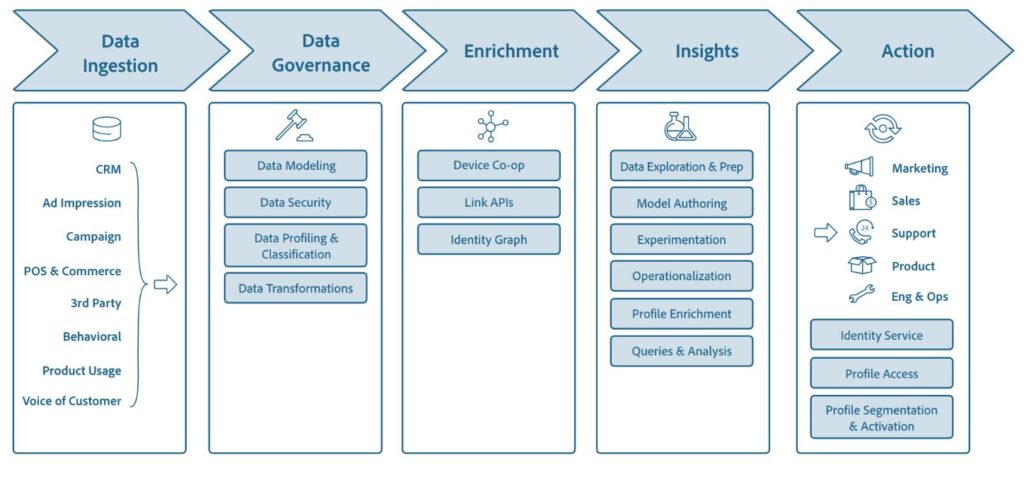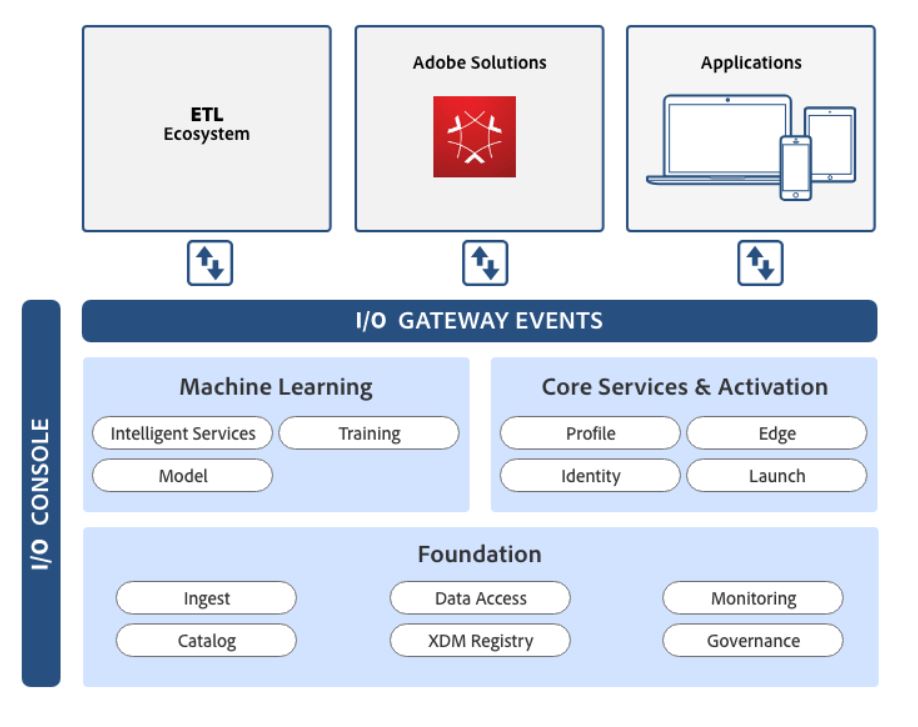This article is a preview intro of the newest solution from Adobe, the Adobe Experience Platform. This tool is going to be released end 2019 and is quite promising so I thought that it deserves its own article as a preview. If you have followed the different article release about Experience Platform, you may not learn a lot but if you are unfamiliar with what is coming, it may be a good recap.
Why incoming ? Because the full scope of the tool is still being developed as I write this and more functionalities are going to be added in the future.
So this introduction is going to be incomplete pretty soon. However, the tool is already quite interesting with the functionalities that have been launched and announced so it deserves this article.
As you probably know by now, I am not sales, neither a promoter, I am here to explain my view on this. It won’t probably be my last article on the subject.
What is the Adobe Experience Plaftorm ?
The Adobe experience Platform is the latest solution from Adobe and it is really focus on data analysis and activation. I see it as Adobe Analytics and Adobe Audience Manager on steroid.
AEP (Adobe Experience Platform) will most probably be the central point of the data in the Adobe world in the future. It will centralize the data flow and distribute information to Adobe solutions or to other tools. It seems that the platform is API first. Therefore it should be quite easy to extract or to add new data to it for developers but less practical for business users that rely on UI components (I totally see that change in the future).
If you go to this page :
https://www.adobe.io/apis/experienceplatform/home/overview.html
You can see the architecture that is provision for this solution and how the data will flow between the different modules :

This is a representation of the data flow, it doesn’t exactly follow that path but it gives you the different actions that are going to be required to use the Adobe Experience Platform to its maximum.

From the previous schema, you better understand the different module types that the Adobe Experience platform is providing. And you are meticulous, you saw that all of these feature fall under the I/O console. API first, I told you….
The modules are:
- Foundation
- Core Service & Activation
- Machine Learning
We will go through each of these items in order to explain them to you and you better understand what is coming. As said earlier, as the product is constantly improving, it is not defined what the extend scope of each functionalities are. What I am going to explain may be incomplete or a bit off in the coming months to year but it should be right most of the times.
Foundation of the Experience Platform
This part of the Platform solution is really what is required to be set in order to be able to use this new solution. This part covers most of the elements that are necessary on your side so the data can be used at some point by the tool(s).
It covers the data access, of course, but also the Data Model Registery (another article on this), the ingestion and many more.
This part will be required, with an in-depth look, if you want to expand the functionality of your Adobe Platform. I feel that all of the different components are quite self-explanatory and going on any further explication from me would be more speculation that real truth. However, if you are a large company with very important number of Data points and legal constraints, you should be pleased to see the level of granularity the data management of platform is showing in that graph.
Never this word has been more true than now : without good foundation, you cannot reach you full potential.
Core Service & Activation
This part is placed for the functionalities that should be globally available.
Would everything that is included would be free ? Certain thing for sure (I don’t see Launch starting to be a paid product) but it would probably be possible to extend some functionalities with premium features.
Profile and Identity are looking the same for most of the user but even if they are related, they provide different services :
- profile : it will be the central data point that feed the different profile data. Like you data base of each profile
- Identity : it will be the service that enable to stitch all of these profile into 1 identity for each user. Enabling cross-device capabilities.
The Edge is nothing new for the Adobe Audience Manager clients but it is nonetheless very important because it enable to target your users on real-time. All tool that can be plugged to Adobe Experience Platform can work within seconds (let’s take some network time into consideration) with the actions realize by your customer.
That seems basic but looking at the amount of data that can be dealt with (uploaded and processed), it is quite incredible.
Machine Learning
The last part is the most selling one, the machine learning capabilities.
Adobe Experience Platform will enable users to use Machine Learning algorithm in the cloud with 2 languages : Python (3), R, pySpark and just Spark.
It will use Jupyter Notebook environment to provide a very easy way to share Models and Data Exploration within a company.
However, imagining any client of platform being able to run its model within few months after getting Platform would be quite an illusion.
Most functionalities are now developed on python, Adobe provide recipes and models builder. However, this is very dependent on the client willingness to invest into those capacities. Having the tool would not provide you the answer, the same than for Analytics. Without people providing insights and knowing business cases, there won’t be much that can be done with this fancy tool.
It is, to most people, the Grail to achieve Machine Learning capabilities at scale in your business, and sure enough Adobe provide a shortcut now. But it doesn’t come cheap, or not as cheap you could have imagined.
However, if you have this kind of capacity, then deploying it and create actions based on this is made easier with the different I/O possibility that Adobe provide through the different APIs of AEP.
I hope this preview was helpful for you.
As said in the introduction, we will discover and learn a lot more during the next months so it probably won’t be my last article on the subject.
In the meantime, have fun.